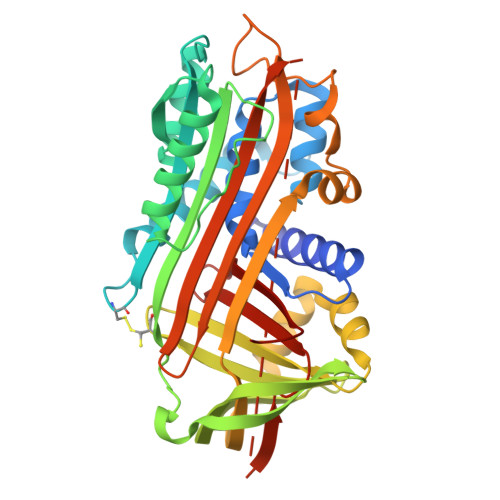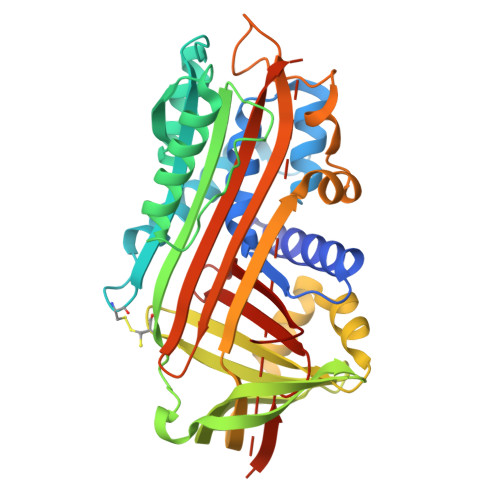Towards Engineering Hormone-Binding Globulins as Drug Delivery Agents.
Chan, W.L., Zhou, A., Read, R.J.(2014) PLoS One 9: 13402
- PubMed: 25426859
- DOI: https://doi.org/10.1371/journal.pone.0113402
- Primary Citation of Related Structures:
4C41 - PubMed Abstract:
The treatment of many diseases such as cancer requires the use of drugs that can cause severe side effects. Off-target toxicity can often be reduced simply by directing the drugs specifically to sites of diseases. Amidst increasingly sophisticated methods of targeted drug delivery, we observed that Nature has already evolved elegant means of sending biological molecules to where they are needed. One such example is corticosteroid binding globulin (CBG), the major carrier of the anti-inflammatory hormone, cortisol. Targeted release of cortisol is triggered by cleavage of CBG's reactive centre loop by elastase, a protease released by neutrophils in inflamed tissues. This work aimed to establish the feasibility of exploiting this mechanism to carry therapeutic agents to defined locations. The reactive centre loop of CBG was altered with site-directed mutagenesis to favour cleavage by other proteases, to alter the sites at which it would release its cargo. Mutagenesis succeeded in making CBG a substrate for either prostate specific antigen (PSA), a prostate-specific serine protease, or thrombin, a key protease in the blood coagulation cascade. PSA is conspicuously overproduced in prostatic hyperplasia and is, therefore, a good way of targeting hyperplastic prostate tissues. Thrombin is released during clotting and consequently is ideal for conferring specificity to thrombotic sites. Using fluorescence-based titration assays, we also showed that CBG can be engineered to bind a new compound, thyroxine-6-carboxyfluorescein, instead of its physiological ligand, cortisol, thereby demonstrating that it is possible to tailor the hormone binding site to deliver a therapeutic drug. In addition, we proved that the efficiency with which CBG releases bound ligand can be increased by introducing some well-placed mutations. This proof-of-concept study has raised the prospect of a novel means of targeted drug delivery, using the serpin conformational change to combat the problem of off-target effects in the treatment of diseases.
Organizational Affiliation:
Department of Haematology, University of Cambridge, Cambridge Institute for Medical Research, Addenbrooke's Hospital, Cambridge, United Kingdom.


















